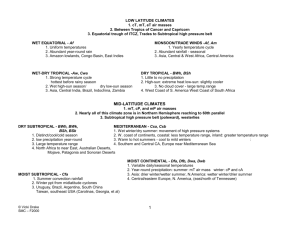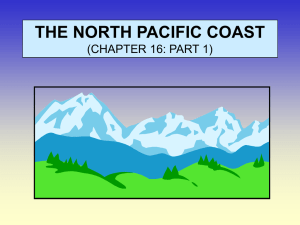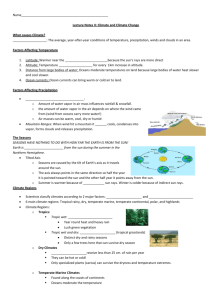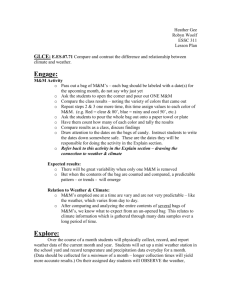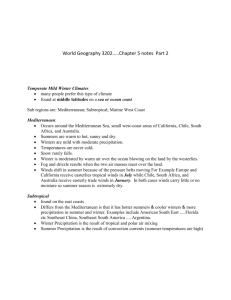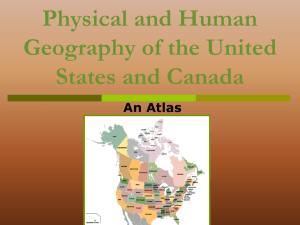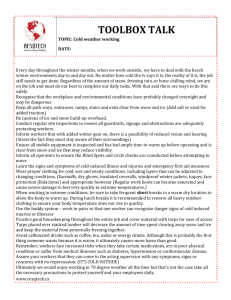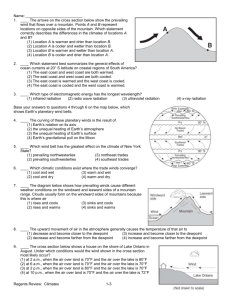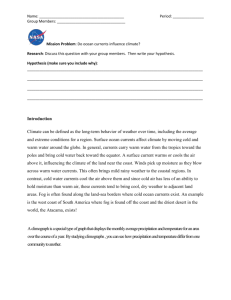Notes: Canada`s Climates Climate: Weather patterns (incl. wind, rain
advertisement
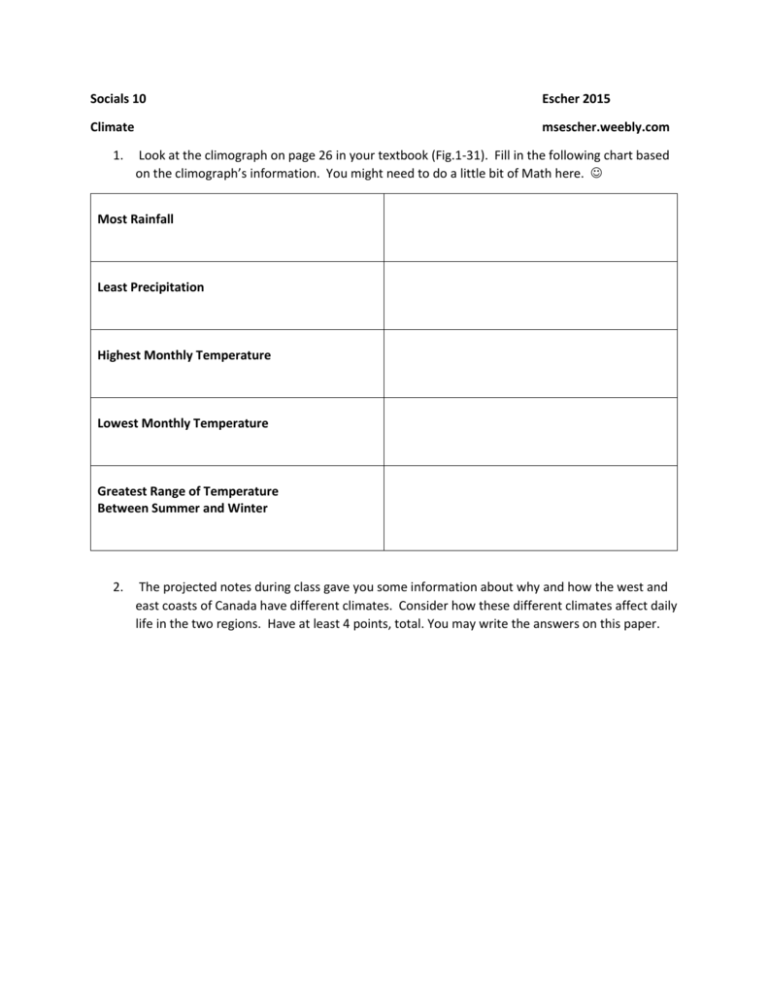
Socials 10 Escher 2015 Climate msescher.weebly.com 1. Look at the climograph on page 26 in your textbook (Fig.1-31). Fill in the following chart based on the climograph’s information. You might need to do a little bit of Math here. Most Rainfall Least Precipitation Highest Monthly Temperature Lowest Monthly Temperature Greatest Range of Temperature Between Summer and Winter 2. The projected notes during class gave you some information about why and how the west and east coasts of Canada have different climates. Consider how these different climates affect daily life in the two regions. Have at least 4 points, total. You may write the answers on this paper. Notes: Canada’s Climates Climate: Weather patterns (incl. wind, rain, sun, clouds, storms, …) Two basic climate patterns in Canada: Continental & Maritime Continental inland areas, low precipitation, extreme temp ranges Maritime coastal (like us here in Vancouver), mild temperature, lots of precipitation West coast has less extreme weather than East Coast, which has more snow Five Key Areas to Explain Temperature Conditions in Canada Altitude: how high are you? The higher you are from sea level, the colder the temp. Have you ever noticed that you can still see snow on mountains during July? Altitude is the reason. Latitude: the horizontal lines on a globe or map, measured in degrees. The higher your latitude, the less intense sun rays. This means that the length of days and nights vary. Distance from Sea: land heats and cools more quickly than water (science fact!). Canada is a huge piece of land, so it can get pretty hot in summer and fairly cold in winter. However, coastal areas are near water, so the temperatures of summer and winter won’t vary as much as a city that is, for example, in the middle of Canada (such as Winnipeg). Ocean Current: Currents are either warm or cold, depending on where they are coming from. Our west coast currents are warm, which heats the air and blows towards us, leaving us with a mild climate (it doesn’t often snow in Vancouver, right?). The East coast (like Nova Scotia and Newfoundland) are near a cold current, which is why their winters are so much harsher than ours. Wind Direction: Our winds are usually from the West or North. So, West coast areas have warmer winters because those warm winds are coming to us from the oceans. The old record for the highest summer temperature in Canada was 45C in Saskatchewan, 1937. We broke BC’s record this past summer (2015) at 40.6C---wow!
